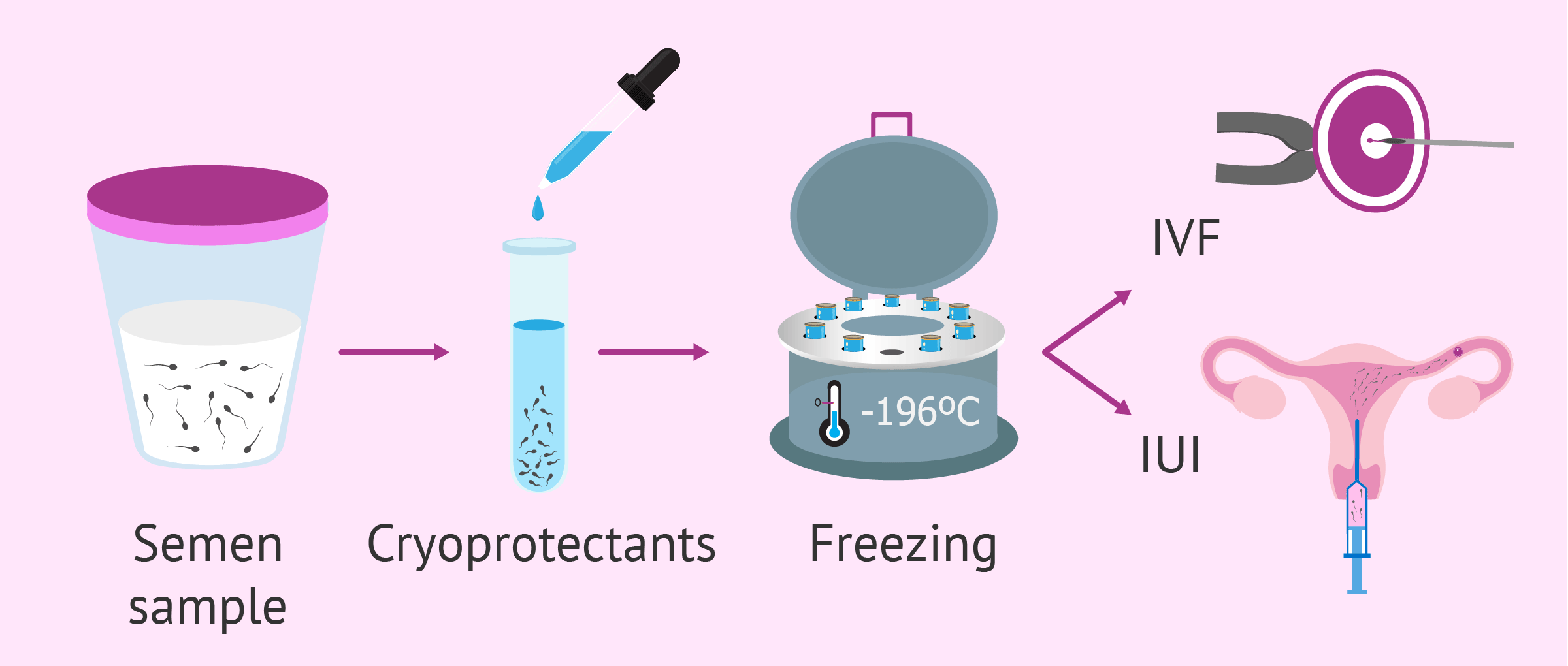
Today, women choose to have children later than ever before. Egg freezing can enable a woman to delay pregnancy until later stages.
If you are planning to have children in the future, you are not alone. More and more people prefer to prioritize their career and work life. This gives them the financial freedom to buy a house, find a life partner and then have children. However, having children later in life is not always easy. In fact, fertility declines with age, and some people who delay parenthood may find it difficult to conceive.
Fertility preservation is a new method that allows people to freeze their eggs and sperm when they are young and use them later when they feel ready to start a family. In this article, we'll talk about fertility preservation so you can decide if it's right for you.
Fertility preservation involves freezing and storing sperm, eggs or embryos with the aim of using them to have children later in life. This is an option for people who do not want children at the moment, or for those who become infertile due to illness or treatment (such as cancer and chemotherapy).
Research shows that the highest live birth rates from their frozen eggs are for women who had their eggs frozen before age 30. These eggs are likely to be of better quality, increasing the chances of them being used.
However, HFEA data shows that most women freeze their eggs around the age of 37. This is a concern because this is the age when fertility begins to decline. If you want to ensure better quality eggs and a higher chance of a live birth, it's best to freeze before you turn 36.
Since sperm quality also decreases with age, it is recommended to freeze sperm before reaching the age of 36.
Freezing sperm is relatively easy. This process includes masturbation and semen collection. If there are circumstances where masturbation is not possible, sperm can also be collected surgically. The collected sperm is frozen in liquid nitrogen and stored for future use in a process called cryopreservation.
The egg freezing process is a bit more complicated than sperm freezing, as it involves surgery to remove the egg from the ovary. Every month a woman produces a mature egg. However, for egg freezing, a woman must stimulate her ovaries to produce multiple eggs. This is achieved by daily injections of FSH over a period of 10 to 14 days. When the follicles are mature enough, the woman injects GnRHa to prevent overstimulation of the ovaries and encourage the eggs to mature. These eggs are collected 36 to 40 hours later through a surgical procedure under ultrasound guidance. You will be under sedation or general anesthesia for this procedure. After the procedure, you may notice vaginal bleeding and abdominal cramping. It is a minimally invasive procedure and the risks are less than 1 in 1,000, but include bleeding, perforation of the bowel or bladder, and possible infection. Collected eggs are frozen for future use.
Humans produce a lot of sperm in each ejaculation. The sperm count varies from about 20 million to 100 million sperm cells per milliliter of ejaculate. Healthy men produce between 1.5 and 5 ml of semen per ejaculation. Therefore, one or two healthy sperm samples are sufficient for freezing.
When it comes to eggs, it's a bit more challenging. Research shows that a 34-year-old woman needs to freeze 10 eggs to have a 75% chance of conceiving. If the woman is 37 years old, she should freeze 20 eggs for the same chance. And by the time she's 42, she'll need to freeze 61 eggs to have a 75 percent chance of conceiving.
This increase is due to egg quality, which declines as women age, and the fact that not all retrieved eggs survive the process of freezing, thawing, fertilization, development into an embryo, and implantation in the uterus.
The number of eggs collected in each stimulation cycle is also different. This is affected by the woman's age, ovarian reserve and how her body responds to stimulation. Some women may produce 15 eggs in one cycle and others may need several cycles to reach this number.
After collection, not all eggs, sperm, and embryos survive the freezing and thawing process. One of the reasons is related to freezing methods: slow freezing or flash freezing.
The slow freezing process takes several hours to reach the final storage temperature. On the other hand, the latest method of rapid freezing (or freezing) is much faster, avoids ice crystals and prevents damage to the oocyte, embryo or blastocyst.
Rapid freezing after the eggs, sperm and embryos have been thawed for use appears to have a higher chance of success. Embryos have a freeze-thaw survival rate of 95% (compared to 50% survival with slow freezing). It's also a better method for freezing eggs that have a freeze-thaw survival rate of over 90% (compared to an approximate 66% survival rate for slow freezing eggs).
If you are young and not ready to have children at the moment, but want to have children later, it may be worth considering fertility preservation. This is not an absolute guarantee, but it gives you more options to plan for your family. Talk to your doctor about your condition. You can also talk to a counselor who can help you think through the procedure and the implications, so you can make an informed choice.
ART treatment processes are performed with full observance of the principle of confidentiality and confidentiality and after going through the legal process.